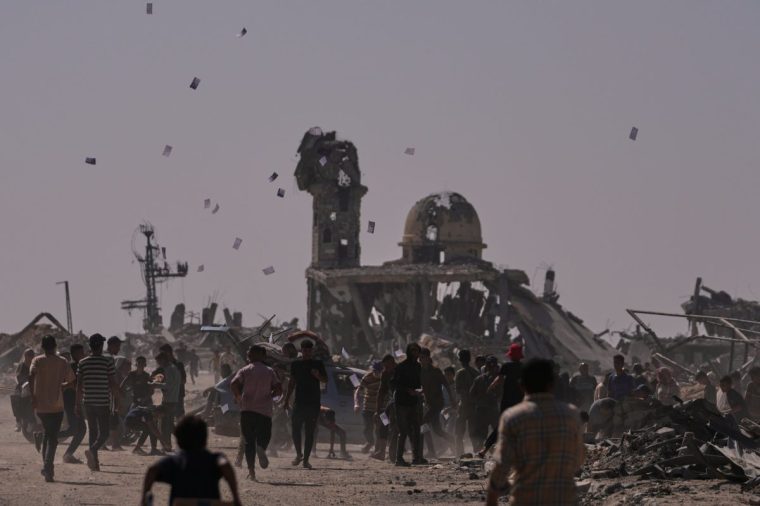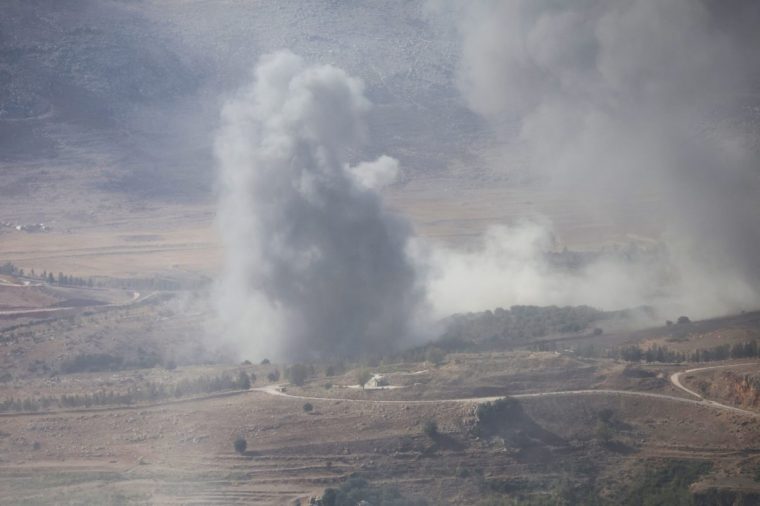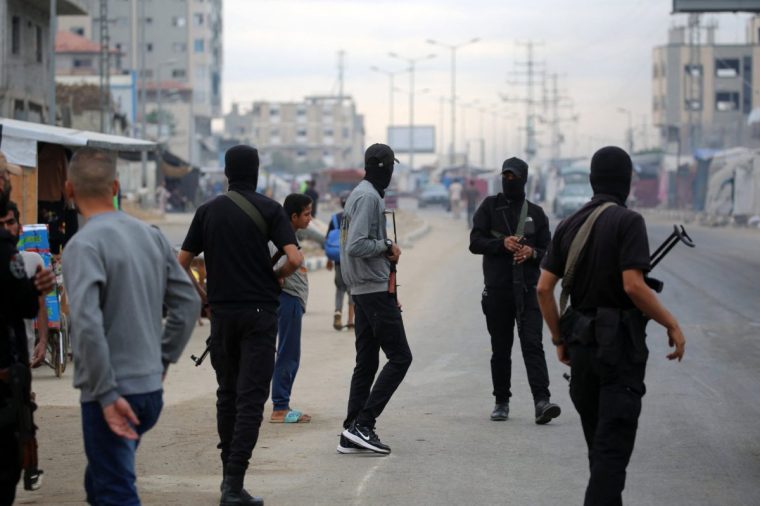Trump is likely to accept violence that does not threaten to wreck his Middle East ‘peace’
Donald Trump is willing to accept eruptions of brutal violence in Gaza provided they do not escalate into a full-scale war that torpedoes his peace deal, experts say.
Fighting is expected to continue in the Strip as the fragile ceasefire between Israel and Hamas teeters on the brink following air strikes at the weekend.
Israel may now pursue a “regularised level of violence” in Gaza that nevertheless does not return to “out-and-out war”, suggests Dr HA Hellyer, a senior fellow at the Royal United Services Institute specialising in Middle East security.
“That’s what the Trump administration wants – there to be an absence of the war, and it will be willing to tolerate a certain level of violence,” added Dr Hellyer.
Ceasefire in peril
In the most perilous moment for the ceasefire so far, Israel and Hamas have accused each other of breaking the truce, prompting fears the enclave could be plunged back into war.
Israel said Hamas attacked its troops in Israeli-controlled Rafah in southern Gaza in a “brazen violation” of the truce, and launched a wave of air strikes that local authorities said killed at least 29 people.
Hamas denied knowledge of the clashes, saying it had lost contact with militants there months ago. One official accused Israel of fabricating “flimsy pretexts” to break the ceasefire.
The violence came little more than a week after the Trump-brokered ceasefire came into effect on 10 October, but followed other violent flare-ups across the enclave.
“The best thing to say about the deal is that Trump seems strongly vested in making it a success – which is a hugely important element, and he is likely to press the Israelis in particular to make sure that he gets his ‘win’,” said Dr David Roberts, a reader in International Security and Middle East Studies at King’s College London.
While both Israel and Hamas have said they remain committed to the ceasefire, lower-level violence is expected to continue across Gaza in the coming days and weeks.

US envoys deployed
Israel still holds about half of Gaza, demarcated by the “Yellow Line”.
“With Israeli forces still controlling over half of Gaza, and with Hamas far from disarming, there are bound to still be clashes,” said Dr Julie Norman, associate professor in Politics and International Relations at University College London. “The ceasefire is very fragile.”
Reports suggest that US officials are scrambling to restore calm, with special envoy Steve Witkoff and Jared Kushner expected in the Middle East to discuss the next phase of the plan.
Trump has declared that the ceasefire is still in place and suggested Hamas leadership might not be responsible for the violations, which would be “handled toughly, but properly”.

Israel may now look to pursue a “Lebanon-style” approach to the Gaza ceasefire. Since its ceasefire agreement there with Hezbollah came into force last November, Israel has repeatedly struck across the border, saying it is targeting militants, weapons and other Hezbollah infrastructure.
Hellyer said there was now relative restraint in Gaza. “It doesn’t mean that there’s peace.”
The danger, he added, was that Israel would now seek to sabotage the ceasefire, to avoid a deal that could lead to the establishment of a Palestinian state.
Trump holding Israel to the deal
Pressure from the Trump administration on Benjamin Netanyahu is likely to ensure the Israelis’ commitment to the deal – at least for now.
One possible flashpoint is the issue of the 16 deceased Israeli hostages still somewhere in Gaza. Under Trump’s plan, Hamas must return their bodies – a difficult task in the devastated enclave that is already threatening to torpedo progress to the next phase of the plan.
If Israel feels Hamas is not making serious efforts to retrieve the bodies, the trust will be further eroded.
The Israeli Government has been considering options to punish Hamas if it does not hand over more bodies, according to The New York Times, citing diplomatic sources.
Dr Roberts says it is “no great surprise that there is difficulty in finding some of the remains” in a rubble-strewn territory that has been largely obliterated by two years of war.
“As to whether that will provide a critical problem – I suspect that that could be a quintessential point of blame and an excuse as to why things ‘have’ broken down, rather than the cause of a fracture in and of itself, given how emotive an issue it is,” according to Dr Roberts.
Clan warfare could spiral
Violence between Hamas and rival Palestinian armed groups is also likely to continue, Dr Norman observes.
Over the past week, dozens of Gazans have been killed in fierce clashes between Hamas security forces and members of prominent clans, with gunfights and executions in the streets, after Hamas pledged to “cleanse Gaza of outlaws and collaborators”.

Following those reports, Trump suggested the US had given Hamas permission to run internal security in the Strip “for a period of time” because “they do want to stop the problems”.
With the absence of any new governing body or stabilisation force in Gaza, there are bound to be more internal clashes between Hamas and other armed groups, said Dr Norman.
“Any of these incidents can be seen as spoilers that completely scupper the ceasefire. The key is to what extent the US and regional actors push Israel and Hamas respectively to stay the course, despite these inevitable violations.
“It’s also absolutely imperative that negotiations move to phase two to start addressing these issues — withdrawal, disarmament, governance, security, etc.”
